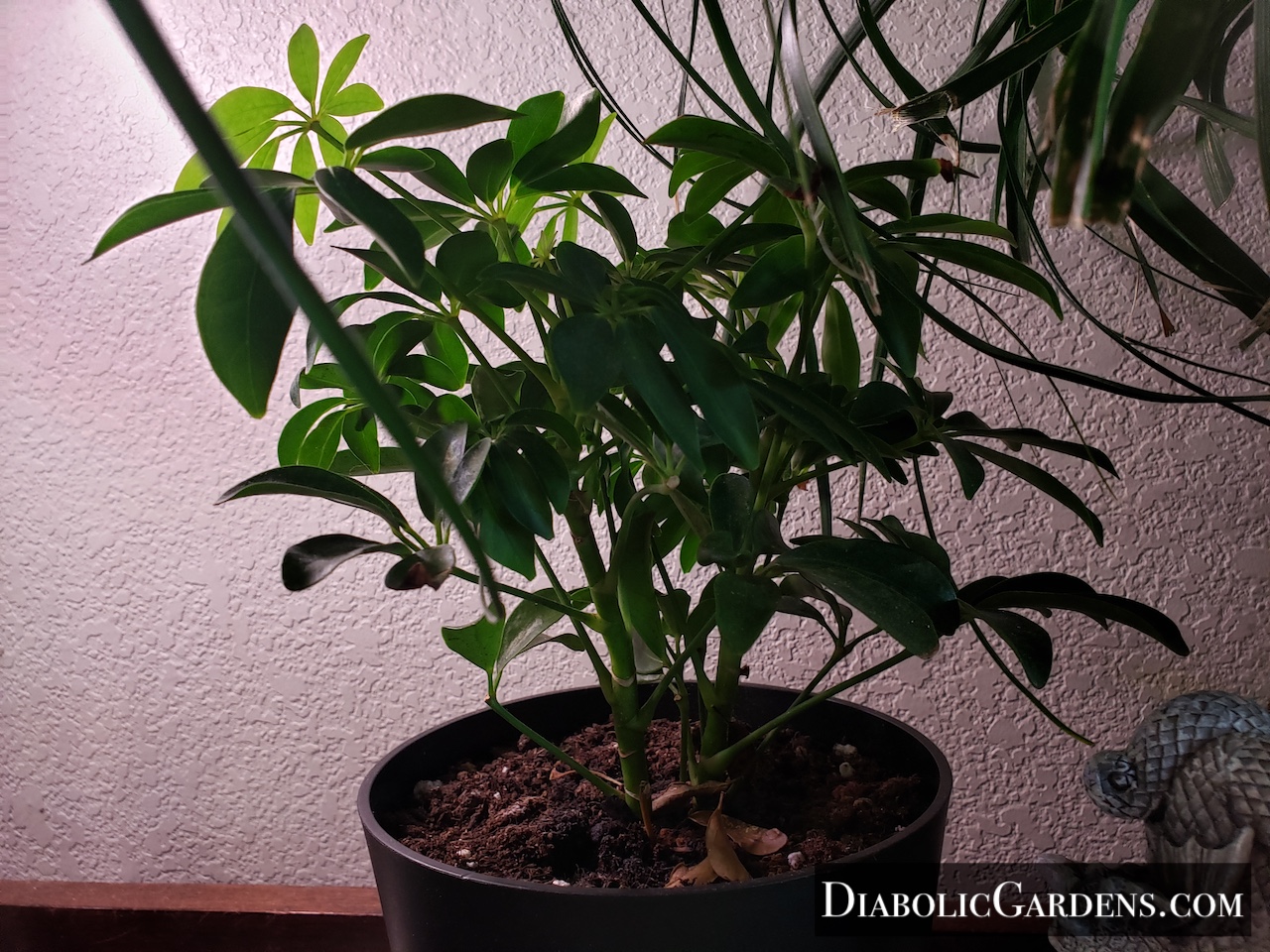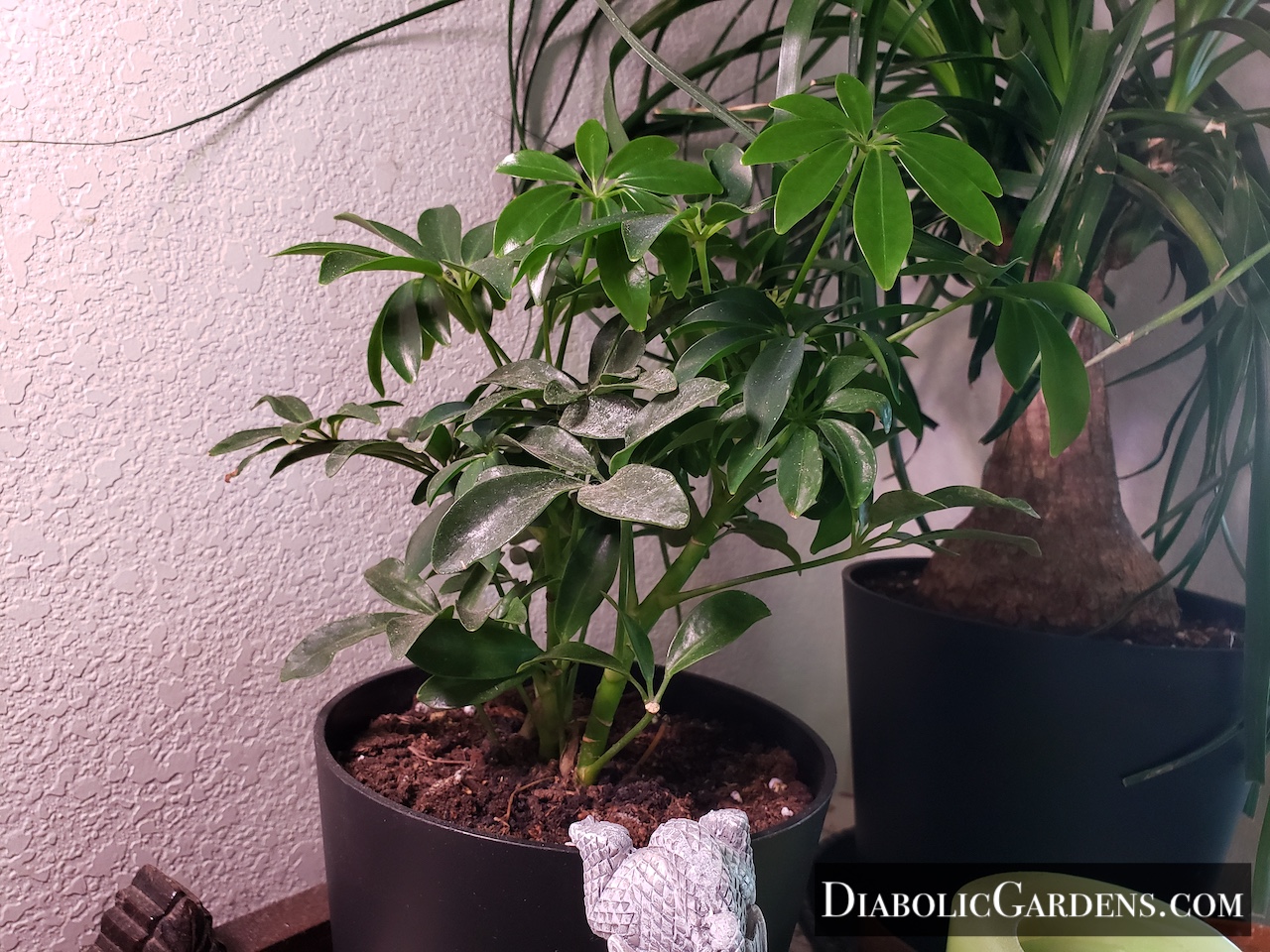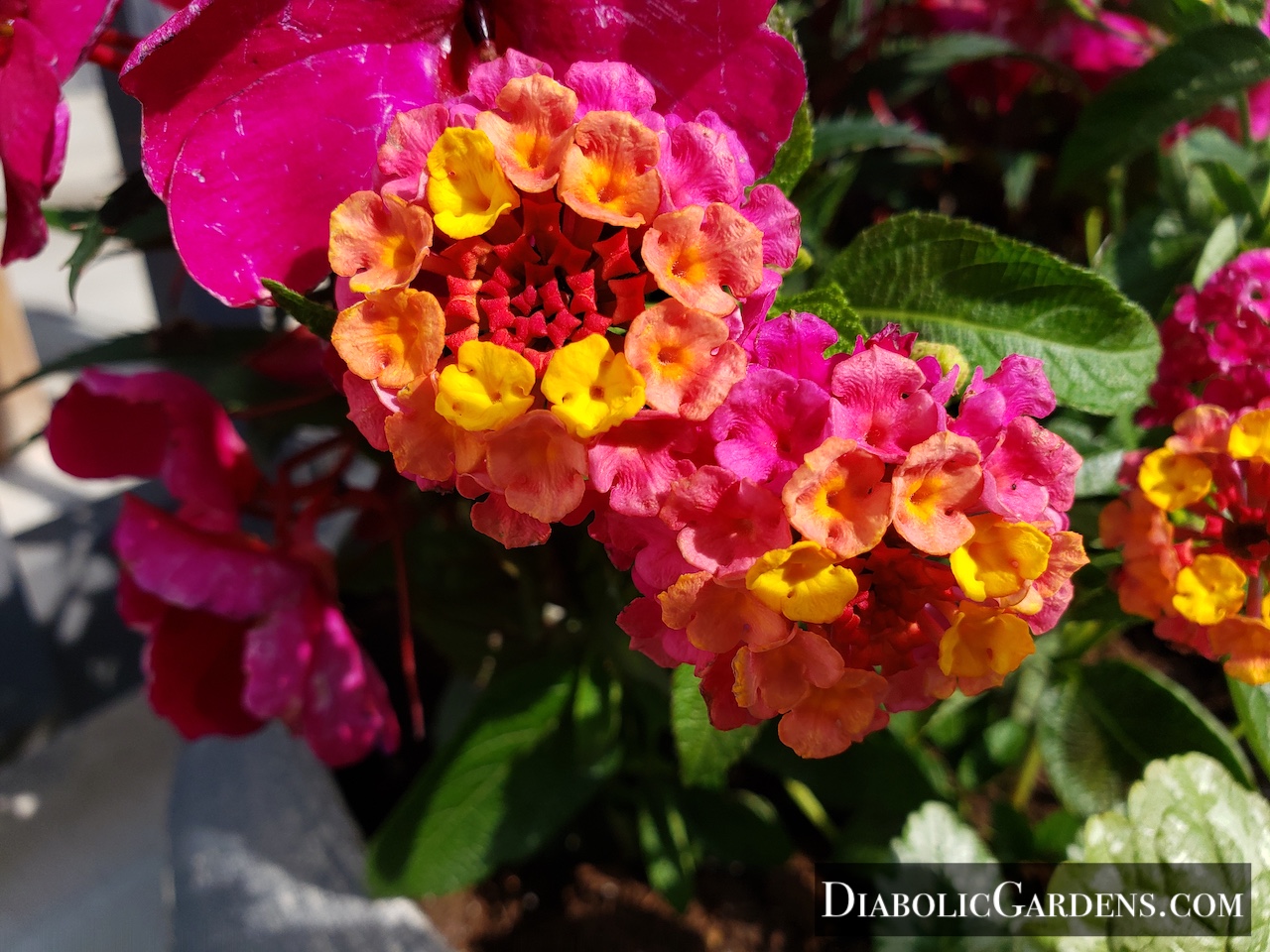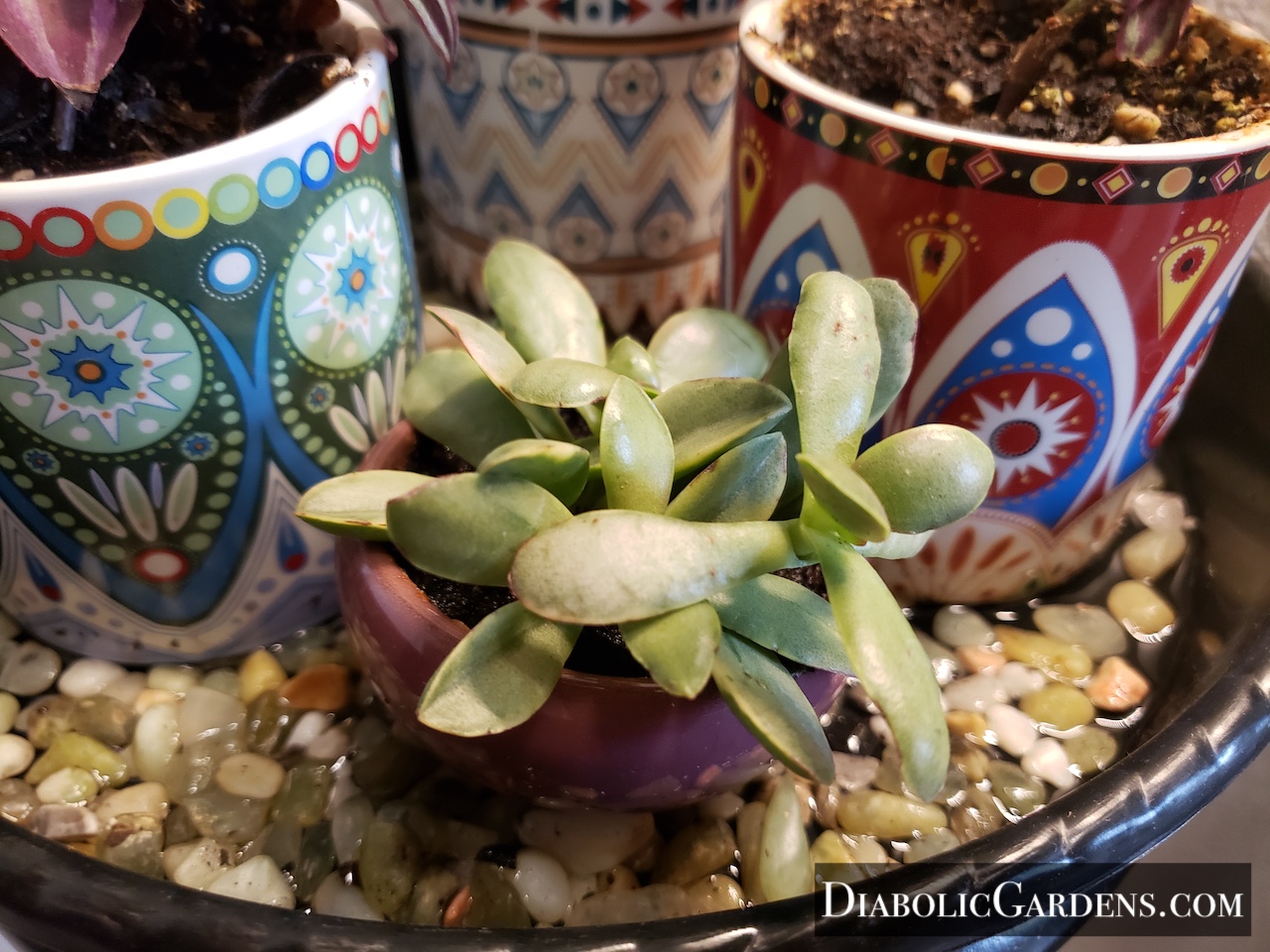Flora - Trees
Dwarf Umbrella Tree
The Dwarf Umbrella Tree is a compact evergreen shrub or small tree with glossy, green leaves that fan out like an umbrella, earning it its common name.
It's a popular houseplant due to its relatively low maintenance needs and ability to thrive in a range of indoor conditions.

Dwarf Umbrella Tree
Schefflera arboricola
Adopted:
2025-04-05
Size:
Height 4 - 15 feet
Toxic:
Be aware that the Dwarf Umbrella Tree is toxic to pets if ingested.
Care:
Light:
Umbrella trees prefer bright, indirect light.
They can tolerate low light, but bright light will encourage fuller, bushier growth.
Avoid direct sunlight, as it can scorch the leaves.
Water:
Water when the top inch of soil is dry.
Allow the soil to dry out completely between waterings to prevent root rot.
Use room temperature water and avoid cold tap water, as it can shock the roots.
Humidity:
Umbrella trees appreciate humidity, especially during the dry winter months.
Mist the leaves regularly or place the plant on a pebble tray with water to increase humidity.
Temperature:
Dwarf umbrella trees thrive in temperatures between 60°F and 75°F.
They can tolerate brief fluctuations but should be protected from temperatures below 55°F and drafts, which can cause leaf drop or slow growth.
Avoid placing them near cold drafts, air vents, or heating/cooling vents.
Soil:
Use a well-draining potting mix.
Avoid heavy clay soil, which can cause water to stagnate and lead to root rot.
Repot every few years when the plant becomes root-bound or the soil has lost its nutrients.
Use a pot that is only slightly larger than the previous one to avoid overwatering.
Fertilizer:
Fertilize every 4-6 weeks during the growing season (spring and summer) with a balanced liquid fertilizer.
Reduce or stop fertilizing during the dormant season (fall and winter).
Pruning:
Remove any dead or yellowing leaves as needed.
Prune the plant to maintain its shape or control its size.
Propagation:
Dwarf umbrella trees can be propagated through stem cuttings or by air layering.
In the wild, it can sometimes grow on other trees as an epiphyte, meaning it derives moisture and nutrients from the air.
While less common indoors, it can occasionally bloom, especially in warmer climates, with flowers that develop into orange-red fruits.

7/19/25

7/19/25
GROW LOG:
- 4/11/2025 - Repotted Milla
- 4/5/2024 - Adopted Milla

